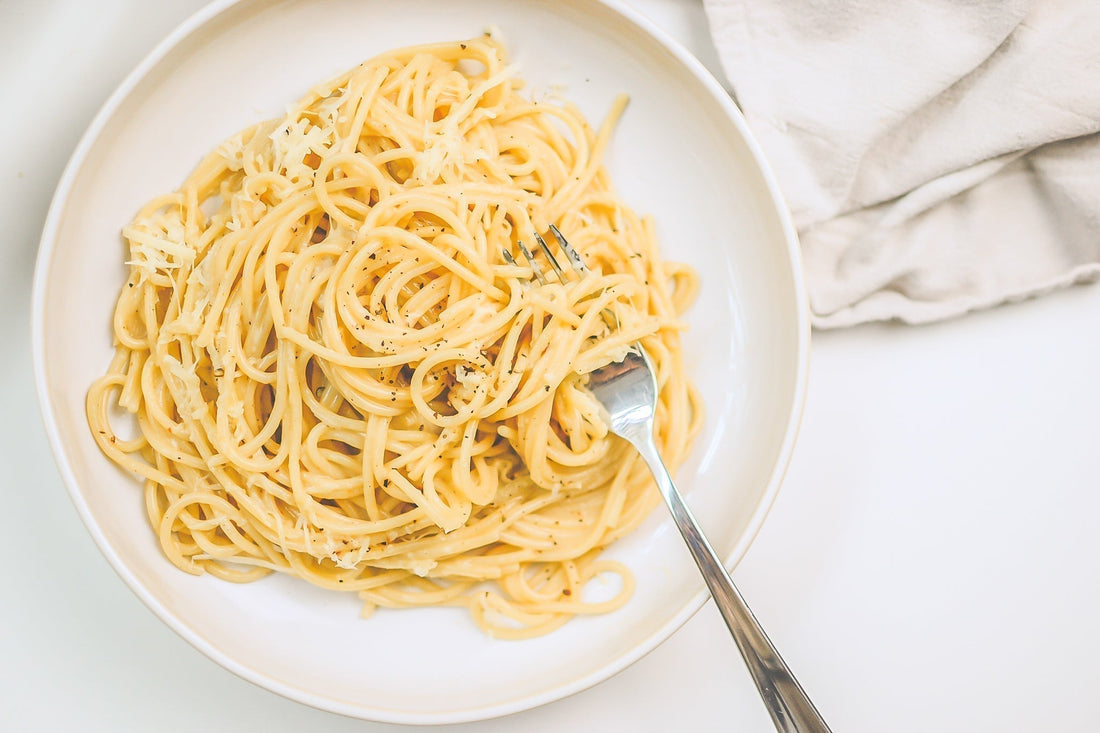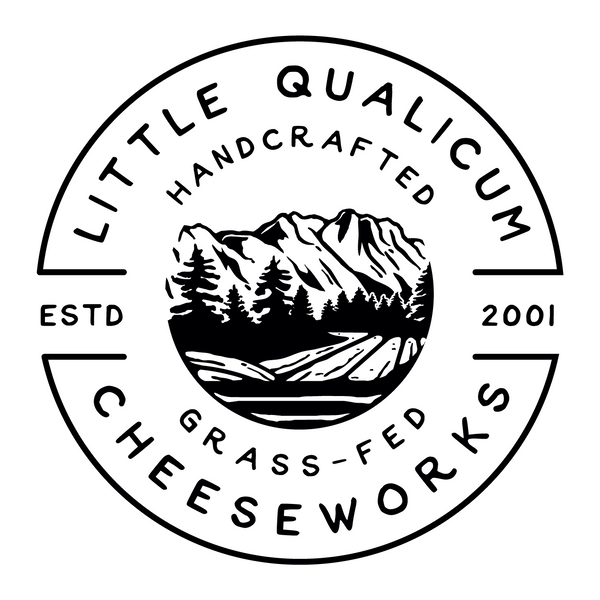
Cacio e Pepe with a Local Flair
We've taken an Italian classic and given it a local flair by using our very own raw milk cheese, Mt. Moriarty. Cacio e pepe is silky, creamy, and with a little technique is quite easy to whip up.
What kind of cheese is Mt. Moriarty?
When a recipe only calls for 3 ingredients, it makes sense to choose them with care! That's why we've selected our aged alpine-style cheddar for it's warm nutty notes and slightly sharp edge. During its year-long maturation, Mt. Moriarty blossoms into a truly unique cheese; the raw milk it's crafted from unleashes distinct regional flavours (or "terroir") that only improve with age.
What is Cacio e Pepe?
This classic Roman pasta dish is traditionally made with spaghetti, black pepper, and pecorino cheese (it's name literally means cheese & pepper). With proper technique, these 3 ingredients combine into a creamy flavourful pasta dish. Simple, right?
About the technique...
While the ingredient list is short, this dish only works if executed properly (we learned the hard way).
The most common mistake with cacio e pepe is the cheese and pasta water becoming lumpy instead of blending together into the creamy sauce everyone loves this dish for. Here's what we found helps to avoid this:
- Cook the pasta in just enough liquid to cover it so the water becomes extra starchy. This helps create a silky texture when it's used in the sauce.
- Be gentle with the heat. Avoid cooking on high, as this will overheat the cheese and it will form lumps instead of blending with the starchy pasta water.
-
Use a microplane to finely grate the cheese. This helps the cheese to melt evenly and thoroughly.
- Cool the pasta slightly before adding the cheese mixture in. This takes the edge off so it's not such a shock in temperature for the cheese.
- Temper the grated cheese with warm pasta water before mixing it in. Doing this will prepare the cheese for the higher temperatures it will face while being mixed in with the pasta.
- Mix quickly. When combining the cheese mixture with the pasta, moving quickly helps even out the temperature so the hot pan and pasta don't over heat the cheese, causing it to form lumps.
We've included these make-or-break tips in the recipe instructions below, so be sure to give them a read as you go. We learned the hard way so you don't have to!

Cacio e Pepe
(Vancouver Island Version)
Yield: 2-4 Servings | Prep & Cook Time: 15-20 min
Ingredients
• 1 1⁄2 tsp whole black peppercorns, ground coarsely
• 2 1⁄2 cups (~150g) Mt. Moriarty cheese, finely grated/microplaned
• 250g spaghetti
• salt (for the pasta water)
Instructions
1. Bring water to a boil and add salt. Cook pasta for half the recommended cooking time (it will finish cooking in the pan).
✴️ Tip: Use just enough water to cover the pasta so that it becomes extra starchy.

2. While the pasta is cooking, heat a pan over medium heat. Add the pepper and toast it, about one minute. The aroma of black pepper should be noticeable, but be careful not to burn!
3. Once the pepper is toasted add a ladle of pasta water to the pan.
4. While the pasta is cooking in the pan, add a small amount of pasta water to the grated cheese. Mix the pasta water in until the mixture forms a paste. Set aside.
✴️ Tip: Use a microplane to get the cheese as finely grated as possible. The finer it is, the less likely it is to melt into a lump.


5. Transfer the pasta to the pan to finish cooking on medium heat. Toss it with tongs to ensure it cooks evenly, adding more pasta water as needed. There should be some starchy liquid left in the pan.
✴️ Tip: Stirring the pasta around also helps to release more starch, which is essential to the silky sauce.


6. When the pasta is al dente, remove from heat. After 1 min, add the cheese mixture to the pan and stir quickly with tongs. The cheese and starchy liquid should form a creamy sauce.
✴️ Tip: Too much heat will cause the cheese to form lumps. This is avoided by letting the pasta cool slightly and stirring the finely grated cheese in quickly and evenly.



8. Plate the pasta, spooning any remaining sauce on top. Top with cheese and fresh pepper if desired.








